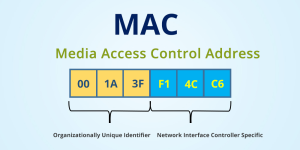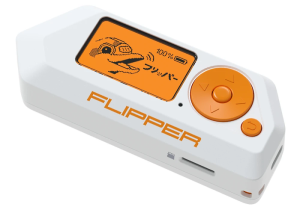In the rapidly evolving arena of cybersecurity, the arsenal of tools available to professionals is as diverse as the threats they face. Among these tools, software-defined radios (SDRs) have emerged as indispensable assets, offering unparalleled versatility and utility in various security applications. Two prominent contenders in the realm of SDRs are the HackRF and the Flipper Zero, each bringing its own set of features, strengths, and limitations to the table. In this comprehensive analysis, we’ll delve deep into the comparison between these two devices, providing an exhaustive exploration of their pros and cons, features, applications, and their significance in the realm of cybersecurity.
HackRF: Unleashing the Power of Software-Defined Radios
HackRF, developed by Great Scott Gadgets, stands as a formidable force in the domain of SDRs, renowned for its extensive capabilities and adaptability to a multitude of security tasks. Let’s delve into its features and assess its strengths and weaknesses:
Pros:
- Wide Frequency Range: One of HackRF’s most notable features is its impressive frequency range, spanning from 1 MHz to 6 GHz. This broad spectrum coverage empowers users to analyze, manipulate, and intercept signals across a vast array of wireless protocols, including WiFi, Bluetooth, GSM, and more.
- Open-Source Architecture: HackRF’s open-source nature fosters a thriving community of developers, researchers, and enthusiasts, who continually contribute to its enhancement and evolution. The accessibility of its schematics, firmware, and software enables users to customize and extend its functionalities according to their specific requirements.
- Versatility: HackRF serves as a versatile toolset for security research, penetration testing, and experimentation. Its capabilities encompass signal sniffing, transmission, reception, and protocol analysis, making it indispensable for a wide range of applications, from RF reverse engineering to spectrum monitoring.
- Community Support: With a large and active community of users and developers, HackRF enjoys robust support in the form of forums, online documentation, tutorials, and third-party tools. This vibrant ecosystem facilitates knowledge sharing, troubleshooting, and collaborative development, enriching the user experience.
- Performance: HackRF delivers commendable performance in terms of signal quality, sensitivity, and throughput, making it a reliable choice for demanding applications requiring high-fidelity RF processing and manipulation.
Cons:
- Complexity: Given its extensive feature set and advanced capabilities, HackRF may present a steep learning curve for novice users. Proficiency in software-defined radio concepts, RF theory, and signal processing techniques is essential to leverage its full potential effectively.
- Cost: While HackRF offers exceptional value considering its capabilities, it may be relatively pricey compared to entry-level SDR alternatives. This could pose a barrier to adoption for budget-constrained individuals or organizations, especially those exploring SDR technology for the first time.
- Power Consumption: HackRF’s power requirements, though not excessive, may be higher compared to some other SDR devices. This factor could impact its portability and suitability for battery-powered or mobile applications, necessitating careful consideration of power management strategies.
Flipper Zero: A Compact Powerhouse for Security Enthusiasts
In contrast to the sprawling capabilities of HackRF, Flipper Zero takes a compact and multifunctional approach, catering to the needs of security enthusiasts and hobbyists with its portable design and versatile toolset. Let’s examine its features and evaluate its strengths and weaknesses:
Pros:
- Compact Design: The pocket-sized form factor of Flipper Zero makes it exceptionally portable, allowing users to carry it conveniently for on-the-go security assessments, pentesting engagements, and hardware hacking projects.
- Multi-Tool Functionality: Despite its diminutive size, Flipper Zero packs a punch with its diverse array of built-in tools and interfaces. From RFID emulation and IR transceiver capabilities to GPIO manipulation and hardware debugging features, it serves as a Swiss Army knife for security professionals, offering versatility across a spectrum of tasks.
- Ease of Use: Flipper Zero prioritizes user-friendliness and accessibility, with an intuitive interface and straightforward controls that streamline the process of interacting with different hardware interfaces and protocols. This makes it an ideal choice for beginners or those seeking a plug-and-play solution for their security experiments.
- Affordability: Compared to some high-end SDRs like HackRF, Flipper Zero presents a more budget-friendly option for security enthusiasts and hobbyists. Its relatively lower cost of entry makes it an attractive choice for individuals or organizations with limited financial resources, without compromising on functionality.
- Wireless Connectivity: Flipper Zero supports both Bluetooth and USB connectivity options, enabling seamless integration with other devices, systems, and platforms. This wireless capability enhances its flexibility and interoperability in diverse environments, facilitating collaborative projects and remote operation scenarios.
Cons:
- Limited Frequency Range: While Flipper Zero offers commendable versatility in terms of its built-in tools and interfaces, its frequency range is more restricted compared to dedicated SDRs like HackRF. Typically covering lower frequencies up to 433 MHz, it may not be suitable for applications requiring analysis or manipulation of signals in higher frequency bands.
- Documentation and Support: While Flipper Zero boasts a growing community of users and developers, its documentation and support resources may not be as extensive or comprehensive as those available for more established SDR platforms. This could pose challenges for users seeking detailed guidance, troubleshooting assistance, or advanced usage scenarios.
- Signal Processing Capabilities: Flipper Zero’s signal processing capabilities may not match those of specialized SDRs like HackRF, particularly in terms of performance, sensitivity, and signal fidelity. While adequate for many common security tasks, it may not be suitable for demanding applications requiring precise RF analysis or complex modulation schemes.
Conclusion: Selecting the Right Tool for Your Cybersecurity Arsenal
In the final analysis, the choice between HackRF and Flipper Zero hinges on a multitude of factors, including the specific requirements of the task at hand, the user’s level of expertise, budget constraints, and preferences regarding functionality and ease of use. HackRF shines as a powerhouse solution for in-depth RF analysis, manipulation, and penetration testing, catering to advanced users and professionals seeking unparalleled versatility and performance in their SDR toolkit. Conversely, Flipper Zero offers a compact and accessible alternative, catering to beginners and enthusiasts with its multifunctional design, affordability, and ease of use.
Ultimately, both HackRF and Flipper Zero represent invaluable assets in the cybersecurity arsenal, each serving distinct niches and addressing unique use cases within the broader spectrum of security research, testing, and experimentation. Whether you’re probing the depths of wireless protocols, exploring hardware vulnerabilities, or honing your skills in RF hacking, the right choice of SDR can make all the difference in your quest for digital resilience and innovation in the face of evolving threats. So, choose wisely, experiment boldly, and arm yourself with the tools you need to navigate the ever-changing landscape of cybersecurity with confidence and expertise.









